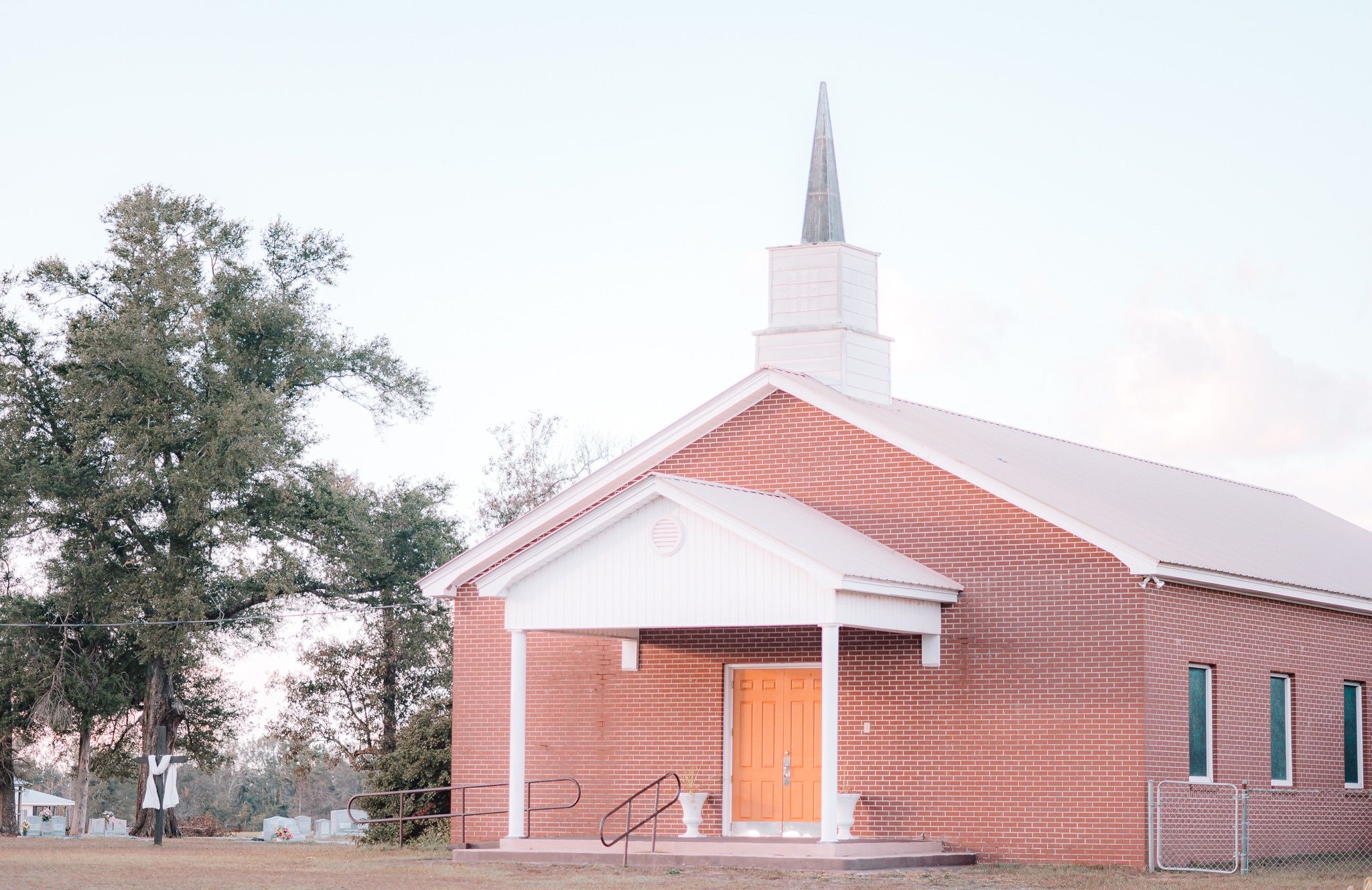The Church Dies Without Discipleship (Part 2)
The Church Dies Without Discipleship (Part 2)
Note: This is Part 2 in a 2-Part series on Barriers to Discipleship.
All Revitalization is Discipleship
Last week, we covered three major barriers to discipleship in a church, and today we cover the last three. If we don’t remove these barriers, it can become extremely difficult to work with a church in revitalization and replanting efforts. Discipleship, not numbers, is the measure of success in churches we are working with.
I was meeting with one of our pastors recently who is a young man and brand new to the ministry. A church called him to be their pastor and he’s done exceptionally well in loving and caring for his congregation, but he’s faced many hurdles. Myself and someone from our Replant team were encouraging him. “Sometimes you may have a hard and miserable week, and you feel like you haven’t accomplished anything. But if you meet with someone to disciple them, it’s a successful week.” Discipleship is the point of the work we are doing, it is the mission. And when these barriers come up, we do everything we can to remove them. To see part one, click here.
4. Theistic Pragmatism
Related to Spiritual Consumerism is the idea of Theistic Pragmatism, which is a type of theology that pervades our culture and our churches much more than we realize. It represents a gradual drift away from the gospel, because it lessens Biblical Doctrine with spiritually empty ideas for the betterment of human life. The best way I can explain this is by using the word “Deism.” Deism is an alternative worldview from Christian theism.
I can list for you a number of church websites that you can go to, and see messages like “3 Ways to Have a Better Marriage,” or “5 Parenting Hacks.” From the pulpit, preachers are preaching messages using a bible theme to convey spiritual messages that are void of the gospel. This dangerous work is more common than we know. 
This false teaching is so dangerous because its implications sound so similar to what Christians teach and believe, but it misses the gospel entirely. This type of mindset is a barrier to discipleship because it represents many misconceptions that people have about the God of the Bible. I’ve talked to many friends and even family about their ideas about God, Jesus, and the Church. Because the popularity of Deism is so widespread and it represents most peoples’ view of God, it can be difficult to combat. But this is the point of discipleship, that as we grow in the faith, a true and more clear picture of the gospel would remind us daily of who Christ truly is. And that we would not be swayed by the false teaching of our day.
In the book “A Field Guide on False Teaching,” Deism is explained in this way: “…deism offers modern people a religion that appears to be more charitable than Christianity. “Moralistic Therapeutic Deism” offers people a God who does not meddle too much in their lives and who also encourages them to be good, fair, and nice to one another. It guarantees salvation to those who pursue a life of goodness and kindness.”
Coined by sociologists in the 2005 book Soul Searching: The Religious and Spiritual Lives of American Teenagers, Moralistic Therapeutic Deism refers to the main belief system in America: that God exists, He wants people to be good to each other, the goal of life is to be happy, God does not involve himself in human affairs except to resolve problems, and good people go to heaven when they die.
This barrier to discipleship should not be overlooked. Many Christians are being discipled by books, podcasts and other resources that would classify under these topics. But in discernment, we can seek to identify false teaching and put an end to it where we can.
5. Programmatic Ossification
A good definition of Ossification is the process of habits or ideas becoming fixed and unable to change. The example that Armstrong gave is a church that sees a church down the road with an idea, and then patterns their church program or ministry after that idea. When a church’s programs fail to adapt or change with the surrounding community, and they decline to the point of death, it is time for a church to reevaluate their ministries and functions. Related to discipleship, new believers can find difficulty being connected to a church that seems so foreign to their community.
At the very root of this is a loss of missional context. In his book Future Church, Will Mancini calls this the local predicament. Every church’s community context is unique, and church growth is local, not imported. But what happens to discipleship when a church loses contact with their community?
I credit Mancini for his thought-provoking dialogue. What happens in Programmatic Ossification is the usefulness of programs is potentially mismatched. When leaders are not emotionally connected to local problems, they can indiscriminately run solutions designed by someone else, somewhere else, for someone else – like David wearing Saul’s armor.
The uniqueness of setting can be tragically squandered. When it comes to both substance and style of ministry, local trumps generic. Every location has a unique story, unique features, unique strengths and unique possibilities. Believers have a harder time building relationships, serving, and having spiritual conversations with unbelievers when the church separates them from their neighborhoods to do church activities elsewhere.
What needs to happen in church revitalizations is local awareness and creativity when it comes to ministries and programs. We have a church located in a rural area of the community with very low-income. They were able to use a government program where they have food drop-offs at their ministry site. Bi-monthly, they have a large food giveaway, and people are lined up for miles to drive by. Their church is well-known as a loving church in their community because they represent Jesus well in the community.
6. Truncated Vision
Another barrier to discipleship in a church revitalization or replant is Truncated Vision, or a loss of purpose. In one church revitalization I am working with, we decided that the first step was to refocus the church spiritually by spending 90 days in prayer and fasting and gathering for worship and fellowship. This is where all churches should begin in a revitalization process.
But the second phase is important and should not be overlooked. That is to recenter on Gospel Mission. A great biblical comparison is to compare the Ephesian Church to the Philippian Church.
In Revelation 2:4, Jesus tells the church in Ephesus, ‘I have this against you, that you have abandoned the love you had at first. Remember therefore from where you have fallen; repent, and do the works you did at first. If not, I will come to you and remove your lampstand from its place, unless you repent.” The Ephesian church was laboring, toiling with patient endurance, but they lost their first love. They had lost their purpose, so they were toiling and striving aimlessly. Jesus wanted them to remember why they had begun this work in the first place.
In comparison, Paul writes to the Philippian church in Philippians 1:3-5 and says, “I give thanks to my God for every remembrance of you, always praying with joy for all of you in my every prayer, because of your partnership in the gospel from the first day until now.” The church in Philippi had understood their purpose, and their toil and striving had a clear direction. The members knew what they were supposed to do: they were to proclaim the gospel.
 In the book Autopsy of a Deceased Church, Thom Rainer says, “Rarely could anyone point to a singular event or historical moment where the purpose was forgotten. It was a deadly and slow process. Attitudes shifted from gospel-centered and other-centered to self-centered. An outward focus became an inward obsession. Routines and traditions and rituals replaced the original purpose of being a gospel-driven people.” Then, Rainer even makes this claim: “A Church without a gospel-centered purpose is no longer a church at all.”
In the book Autopsy of a Deceased Church, Thom Rainer says, “Rarely could anyone point to a singular event or historical moment where the purpose was forgotten. It was a deadly and slow process. Attitudes shifted from gospel-centered and other-centered to self-centered. An outward focus became an inward obsession. Routines and traditions and rituals replaced the original purpose of being a gospel-driven people.” Then, Rainer even makes this claim: “A Church without a gospel-centered purpose is no longer a church at all.”
When Paul said, “From the first day until now,” this indicates that they did not stop understanding their purpose. There was a constant reminder to live and share the gospel. For churches that have no clear purpose or direction, one of the first steps in revitalization is to strip the church down to its bare bones and simply remember why it exists. This is why so many resources today help churches on the identifying markers of a healthy church.
In a Neat Little Bow
How do we wrap this up? I think in a statement like this: “Discipleship is messy, but it’s worth it.” Going and making disciples is difficult because it involves sinful people – and you’re one of them.
I couldn’t summarize this better than Joel Woodruff, who is the president of the C.S. Lewis Institute. In a Research Paper called “Discipleship is Messy Business,” he said this:
“If Paul’s letter of 1 Corinthians is any clue to us, we shouldn’t expect relationships in the church to be easy. Paul addresses all kinds of human foibles, busted relationships, and corruption that are taking place in the midst of God’s people, the church. It is clear that it would be naïve to think that church life will be easy.
“On the other hand, we should expect relationships among Christians to get better if we are seeking the empowerment of the Holy Spirit to help us live righteous and godly lives. As we seek to carry out the Great Commission, make disciples, and learn to obey all that Jesus commanded, we should see marked improvement in the way we love and care for one another. If we don’t see improvement, then we need to question whether or not we are really Jesus’s disciples.
“It is clear that discipleship is messy business. Just look at the antics of the apostles who walked and talked with Jesus. They were far from perfect and did some pretty stupid things. Yet God used them to ‘turn the world upside down.’ That should be encouraging to us.
“The good news for us is that Jesus has also chosen to work with you and me despite our sin. If we are able to work through the messiness of our own discipleship process, I trust people will be able to say, “This place, the church, is gorgeous! And what loving and beautiful people!”















